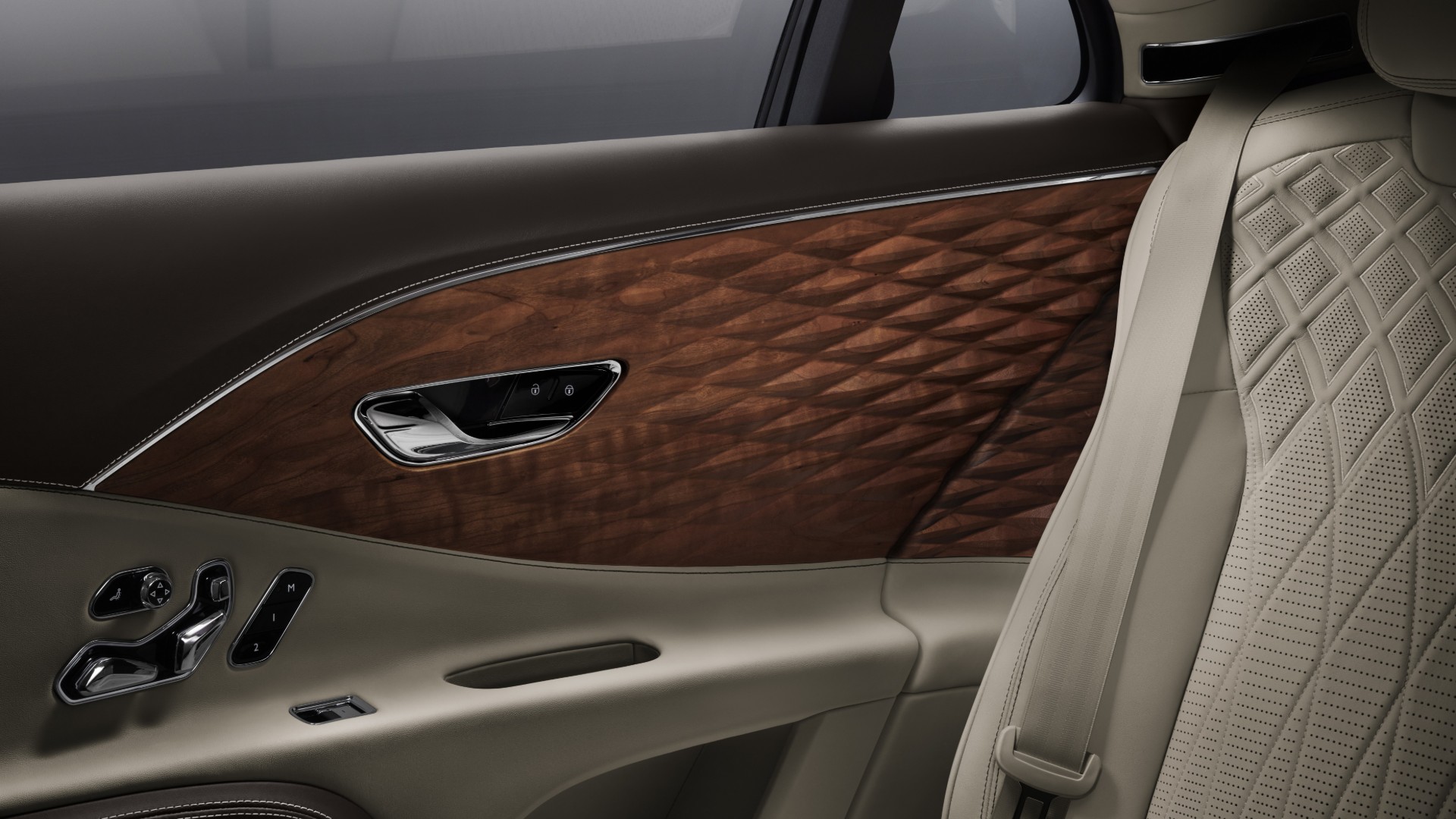

Back in 2015, Bentley wowed the Geneva Motor Show crowd with the EXP 10 Speed 6 concept, a sleek coupé with a hybrid powertrain and an array of 3D-printed components. Next to acres of the finest leathers, this preview of Bentley’s possible future in the luxury GT segment also featured experimental 3-D wooden door inserts, inspired by the diamond-quilted leather used by specialty department Mulliner. The futuristic model has sat on the shelf since, but Bentley is finally putting its luxurious “quilted” wood to use with the new Flying Spur.


Bentley’s 3-D-machined wooden door inserts required 18 months of product development. Each panel is handcrafted from a single block of American Walnut or American Cherry timber instead of layers of veneers. These sustainably-sourced pieces of wood are hand-carved with a multi-axis routing machine to a tolerance of 0.1 millimeters, matched to the die-cast aluminum door panels and finished with an open-pore lacquer to show off 150 unique veneered diamonds. Mulliner throws in its signature diamond-quilted leathers, and it’s possible the Flying Spur could make you forget that the Mulsanne is no more.
Maybe this is what innovation looks like now, and it’s neat, for sure. But maybe there’s more than one reason why it’s an industry-first. Then again, we aren’t One Percenters.
Bentley is quick to point out that while American Walnut is increasing by three million cubic meters each year, American Cherry woodland is doing even better at seven million per. At least you don’t have to feel bad for driving a Flying Spur with a bunch of Mulliner options ticked.



Got a tip? Send us a note: tips@thedrive.com